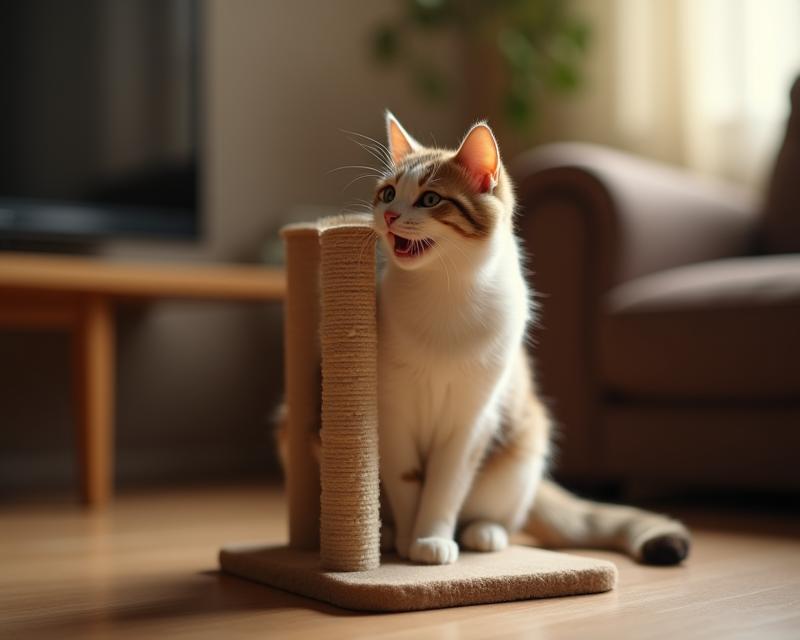Why Do Cats Scratch? Decoding Their Behavior
Publish in Education el 28/06/2025 23:28
Why Do Cats Scratch Furniture? Decoding Their Behavior
Have you ever come home to find your favorite armchair looking a little… worse for wear? If you own a cat, chances are you've experienced the frustration of furniture scratching. It's a common behavior, but understanding *why* your cat does it can help you redirect this instinct and protect your belongings. It's not about spite – it's all about feline nature!

It's Not About Being Naughty!
First things first: scratching is completely natural and essential for cats. It's not a sign of disobedience or a personal attack on your home decor. Think of scratching as a vital form of self-care for your feline friend. There are several reasons why cats scratch, all deeply rooted in their instincts. One primary reason is to sharpen their claws. Scratching removes the outer, dead layers of their claws, keeping them healthy and strong. It’s like a built-in nail file!
More Than Just Claw Maintenance
But scratching isn't just about claw maintenance. It's also a way for cats to mark their territory. Cats have scent glands in their paws, and when they scratch, they deposit their scent onto the object. This scent acts as a visual and olfactory signal to other cats, communicating ownership and establishing their presence. It's a feline way of saying, “This is mine!” Scratching also provides a good stretch for their muscles and tendons. It’s a full-body workout disguised as a seemingly destructive act.
Redirecting the Scratching Instinct
So, how do you protect your furniture while still allowing your cat to express this natural behavior? The key is to provide appropriate scratching outlets. Invest in a variety of scratching posts – different materials (sisal, cardboard, carpet), different orientations (vertical, horizontal, angled), and different heights. Place these posts in prominent locations, especially near areas where your cat already likes to scratch. You can also use catnip to entice your cat to use the scratching post. Positive reinforcement, like praise and treats, when they use the post is also very effective. Avoid punishing your cat for scratching furniture; this will only create anxiety and may make the problem worse. Instead, focus on making the scratching post a more appealing alternative. With a little patience and understanding, you can redirect your cat's scratching behavior and keep both your furniture and your feline friend happy!
- Provide scratching posts of various materials.
- Place posts near areas where your cat already scratches.
- Use catnip to attract your cat to the posts.
- Reward your cat when they use the scratching post.


